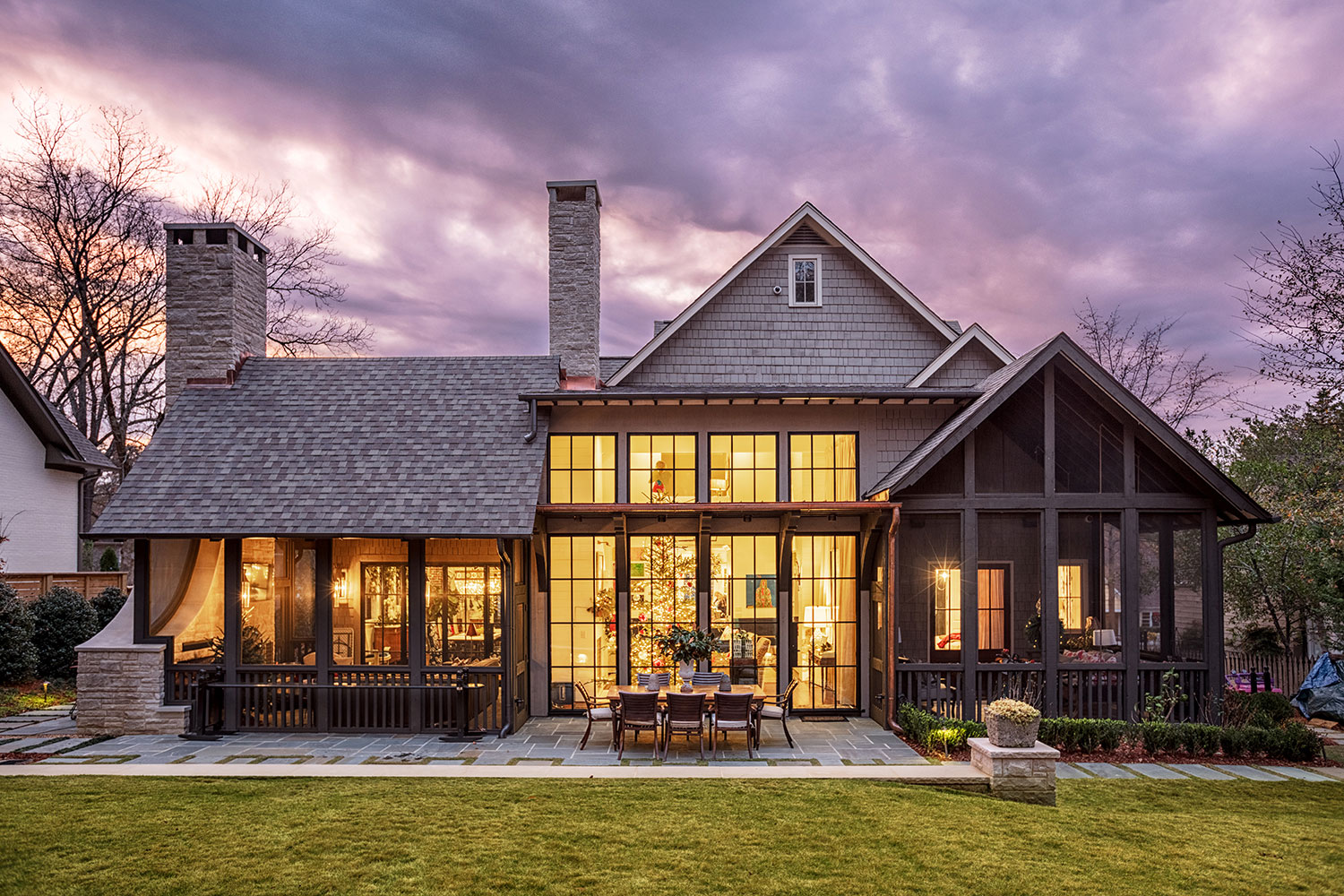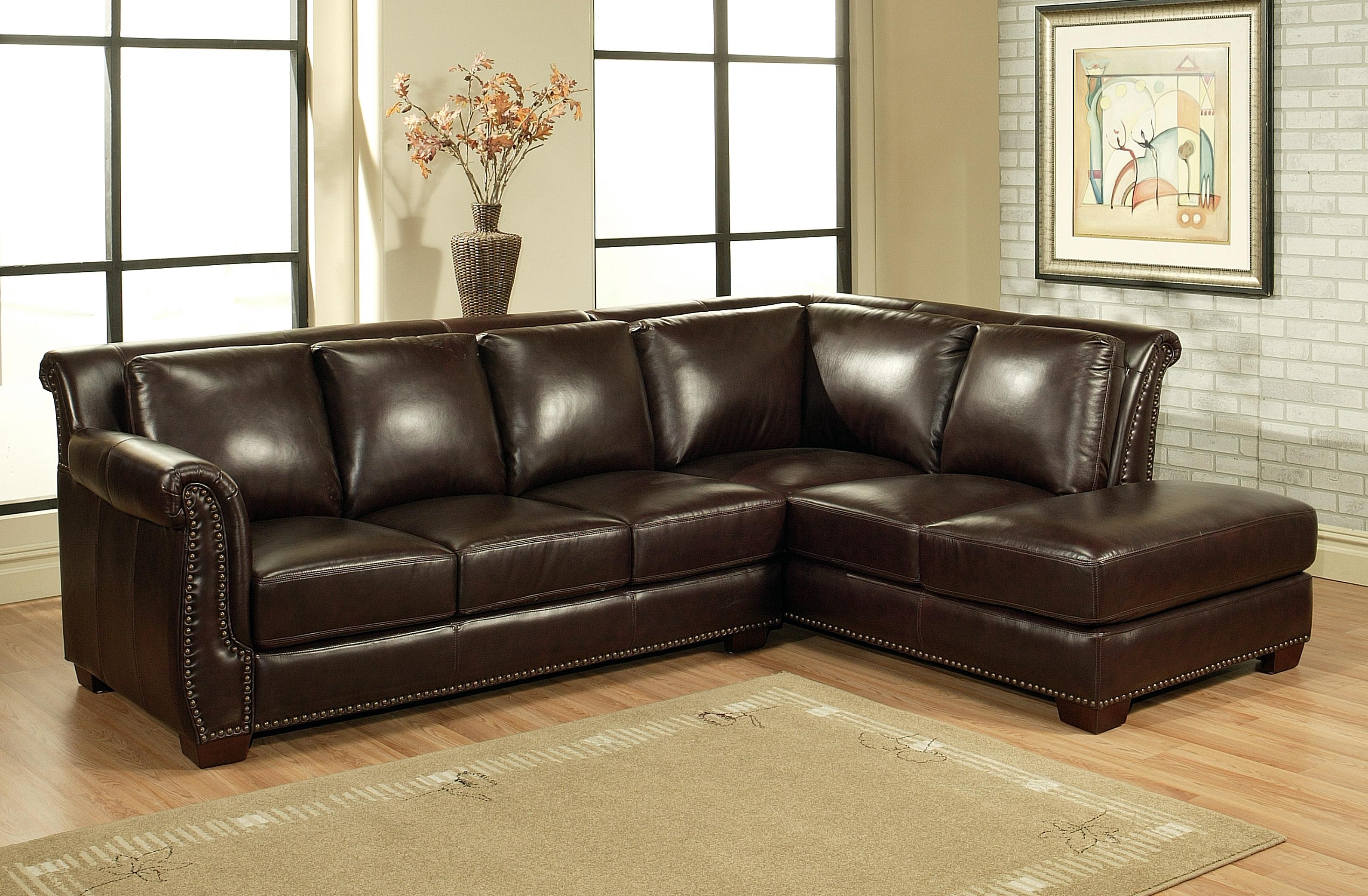Craftsman house design is a classic American style that typically includes a low-pitched roof, wide overhanging eaves, an exterior porch or open veranda oin the front, exposed rafters in the eaves, traditional elements in the timber trim, a prominent chimney, and a strong horizontal emphasis This type of house is characterized by its distinctive architectural style, most notably with the roofline. These types of houses have a low-pitched roofline, which tends to be more slanting than other architectures. These houses also have wide overhanging eaves, which can be a great feature to add a lot of visual interest to a front facade without compromising any structural integrity. It also adds an opportunity to showcase decorative trim, such as wood beams and paneling. As for the interior of a Craftsman house, it typically features open-space living areas with simpler wooden furniture, while maintaining traditional elements such as built-in cabinetry and fireplaces.1920s Craftsman House Design
Dutch Colonial house design is an American style, which features a gambrel roof with flared eaves that come to a peak with decorative brackets. This design is also known as a ‘barn roof’ because of its distinct shape and steepness. Dutch Colonial houses typically feature wider window sashes than other Colonial-era houses, most likely due to its Dutch influence. Other features of this style include roof overhangs with decorative wooden brackets, and a gable front porch. In terms of interior design, Dutch Colonial homes typically have two stories, with the second floor sitting above the first and featuring sloping ceilings. The houses usually have large, divided-light windows and feature wide baseboard and trim.1920s Dutch Colonial House Design
Bungalow house design is a style that was popularized during the early 20th century in America as a form of affordable living. This type of house typically features wide overhanging eaves; a deep, full-width front porch; and a steeply-pitched, side-facing gable roof. These types of houses usually have the characteristic ‘bump-out’ bay window on the front and side of the house and use rectangular windows for symmetry. Also, bungalow houses typically come with a square, low-pitched roof, and can be single-story or one-and-a-half story homes. On the inside of these houses, you can typically find wide baseboard and trim, built-ins, dark wood floors, and built-in cabinets, making this style one of the few that celebrates cozy and practical designs.1920s Bungalow House Design
The Metropolitan house design is an American style that largely captures the Art Deco design movement during the 1920s. This style has a short, low-pitched roof that extends from side to side, while the eaves overhang the walls of the house and are usually wider than the roof itself. These types of houses also feature flat, stucco siding that creates strong vertical lines on the facade. Additionally, the facade of this house style will maintain horizontal elements such as banded windows and balconies. On the interior of a Metropolitan house, you can find large windows, lots of mirrors, and even extra height windows. They also feature clean-lined furniture and simple ornamentation that emphasizes a contemporary look.1920s Metropolitan House Design
The La Ruthian house was a popular house style from the 1910s to the 1930s, and is known for its low-pitched roof and strong, symmetrical design. This design typically features a gabled roof pitch enclosed by wide overhanging eaves and a hipped roof with wide eaves, giving it a unique look. These houses typically only have one story, but can feature a wide, open front porch and other unique details such as shutters, decorative brackets, and columns. Inside, you can find high ceilings and lots of natural light, as well as design elements from the Craftsman style, such as decorative trim and built-in cabinetry.1920s La Ruthian House Design
The Mediterranean house design is a style that emphasizes outdoor living, usually with a large backyard that's surrounded by balconies, terraces, and loggias. This style of house typically has a low-pitched hip roof and a wide, flat eaves that extend out from the side of the facade. This type of house also has the signature red-tile roof, which is symbolic of the Mediterranean region and its warm weather, and often has white stucco walls with subtle decorative detailing. The interiors of these houses usually feature spacious, open rooms and large windows with lots of natural light, which allows you to take advantage of the sunny climate. The furniture is usually simple, elegant pieces that don't detract from the stylish design.1920s Mediterranean House Design
The Tudor Revival house design is an American style that reflects England's architectural style of the late 15th and early 16th centuries. This type of house typically has a steeply-pitched roof with prominent, multi-gabled fronts, half-timbered walls with plaster infill, and tall, single-pane windows. The interior design of this style is usually inspired by the English aesthetic, which features many dark wood trim pieces and metalwork, such as wrought iron. The furniture is usually simple, with traditional shapes that give it an inviting, cozy feel.1920s Tudor Revival House Design
The Queen Anne house design is a classic American style that dates back to the late 19th century. This style of house typically has a complex layout that features an array of bay and oriel windows, a two-story porch, and a steeply-pitched roof. The exterior of these houses often feature decorative stone and brickwork with intricate moldings and trim. These houses usually feature bright colors, which gives them a unique, cheerful look. The interiors typically feature large, open rooms and lots of built-in features, such as fireplaces and cupboards.1920s Queen Anne House Design
The Colonial Revival house design is a classic American style that emerged in the early 20th century. This type of house usually has a symmetrical facade, with a two-story porch, a low-pitched roof, and a gabled front. The architectural appeal of Colonial Revival houses lies in its details, such as its columns, shutters, and even dormers. Inside, the houses feature high ceilings, rich woods, detailed mantelpieces, and decorative fireplaces. This style is also known for its elegant, classic look, which emphasizes symmetry and an air of sophistication.1920s Colonial Revival House Design
The Spanish Colonial house is an American style that draws its influence from the Mediterranean and Moorish architecture of Spain during the 17th and 18th centuries. This type of house typically has a light-colored stucco wall, a low-pitched tile roof, decorative tilework, and ornate details, such as ironwork balconies and detailed porticos. This type of house usually features an array of windows to take advantage of the warm temperatures and natural sunlight of the region. The interiors usually feature high, beamed ceilings and architectural elements that evoke the Spanish style, such as wrought iron or decorative tile, to provide an interesting contrast with the lighter colors of the walls and furniture.1920s Spanish Colonial House Design
The Populuxury of 1920s House Design
 The late 1910s to early 1920s saw a surge in popularity of a new type of residential architecture known as “Populuxury”. This style was a reflection of the newly acquired wealth of the upper classes, which manifested itself in homes that had expansive, spacious floor plans without sacrificing luxury and grandeur. The hallmark of Populuxury architecture of this era was simple, but elegant lines that highlighted the beautiful craftsmanship and materials that went into each home.
On the inside, rooms were typically decorated with lavish furniture that would be seen as fine antiques today. Furnishings ranged in style from area rugs, tapestries, ornate chairs and marble fireplaces. The walls around the living room, hallways, and dining rooms were adorned with expensive hand-painted wallpaper. The attention to detail in the design extended to the entrance, where many Populuxury homes featured grand entryways with heavy dark wood doors and ornate hardware.
The exterior of Populuxury homes also showcased remarkable beauty and uniqueness. Decorative brick and stone work help to enhance the grandeur of stucco or wood-clad exteriors. Long windows, generally set in pairs, would often be clad in cedar with detailed millwork framing the window frames. Gables, arches, and complicated pitched roofs gave each house an individual elegance in an era when very few homes were cookie-cutter.
The fine detailing and craftsmanship of Populuxury homes of the 1920s still inspire meaningful architectural trends today, leaving a lasting legacy on modern home design.
The late 1910s to early 1920s saw a surge in popularity of a new type of residential architecture known as “Populuxury”. This style was a reflection of the newly acquired wealth of the upper classes, which manifested itself in homes that had expansive, spacious floor plans without sacrificing luxury and grandeur. The hallmark of Populuxury architecture of this era was simple, but elegant lines that highlighted the beautiful craftsmanship and materials that went into each home.
On the inside, rooms were typically decorated with lavish furniture that would be seen as fine antiques today. Furnishings ranged in style from area rugs, tapestries, ornate chairs and marble fireplaces. The walls around the living room, hallways, and dining rooms were adorned with expensive hand-painted wallpaper. The attention to detail in the design extended to the entrance, where many Populuxury homes featured grand entryways with heavy dark wood doors and ornate hardware.
The exterior of Populuxury homes also showcased remarkable beauty and uniqueness. Decorative brick and stone work help to enhance the grandeur of stucco or wood-clad exteriors. Long windows, generally set in pairs, would often be clad in cedar with detailed millwork framing the window frames. Gables, arches, and complicated pitched roofs gave each house an individual elegance in an era when very few homes were cookie-cutter.
The fine detailing and craftsmanship of Populuxury homes of the 1920s still inspire meaningful architectural trends today, leaving a lasting legacy on modern home design.
A Variety of Building Materials Commonly Used in 1920s House Design
 The world of 1920s home design was driven by novel fabrications, fine craftsmanship, and innovative building techniques. Various materials were employed in the construction of these residences, giving each house a unique style and character.
The world of 1920s home design was driven by novel fabrications, fine craftsmanship, and innovative building techniques. Various materials were employed in the construction of these residences, giving each house a unique style and character.
Wood
 Wood played a major role in the construction of 1920s Populuxury homes, often featuring warm tones like oak and cherry. Highly-crafted woodwork such as chair rails, detailed paneling, staircase banisters, and chair molding were all common elements that gave each house its own style.
Wood played a major role in the construction of 1920s Populuxury homes, often featuring warm tones like oak and cherry. Highly-crafted woodwork such as chair rails, detailed paneling, staircase banisters, and chair molding were all common elements that gave each house its own style.
Marble
 The use of marble was not only popular for architectural accents, but also as a floor covering. Marble was a symbol of wealth and luxury used for flooring, countertops, and even bathroom fixtures.
The use of marble was not only popular for architectural accents, but also as a floor covering. Marble was a symbol of wealth and luxury used for flooring, countertops, and even bathroom fixtures.
Terrazzo
 Terrazzo was a favorite for flooring, typically a combination of marble chips, granite, quartz, and glass embedded in a cement base. Due to its durability and classic look, many architects still choose to use terrazzo today.
Terrazzo was a favorite for flooring, typically a combination of marble chips, granite, quartz, and glass embedded in a cement base. Due to its durability and classic look, many architects still choose to use terrazzo today.
Tile
 Wall and roof tiles were some of the most noteworthy features in many Populuxury homes. Clay and cement tiles were popular for roofing due to their strength, while ceramic tiles were often used for the interior of a home.
The choice of building materials used in the 1920s left an indelible imprint on residential architecture which continues to be seen today. By incorporating a variety of carefully selected materials, these homes were able to add a distinctive flair to homes of that era.
Wall and roof tiles were some of the most noteworthy features in many Populuxury homes. Clay and cement tiles were popular for roofing due to their strength, while ceramic tiles were often used for the interior of a home.
The choice of building materials used in the 1920s left an indelible imprint on residential architecture which continues to be seen today. By incorporating a variety of carefully selected materials, these homes were able to add a distinctive flair to homes of that era.














































































































